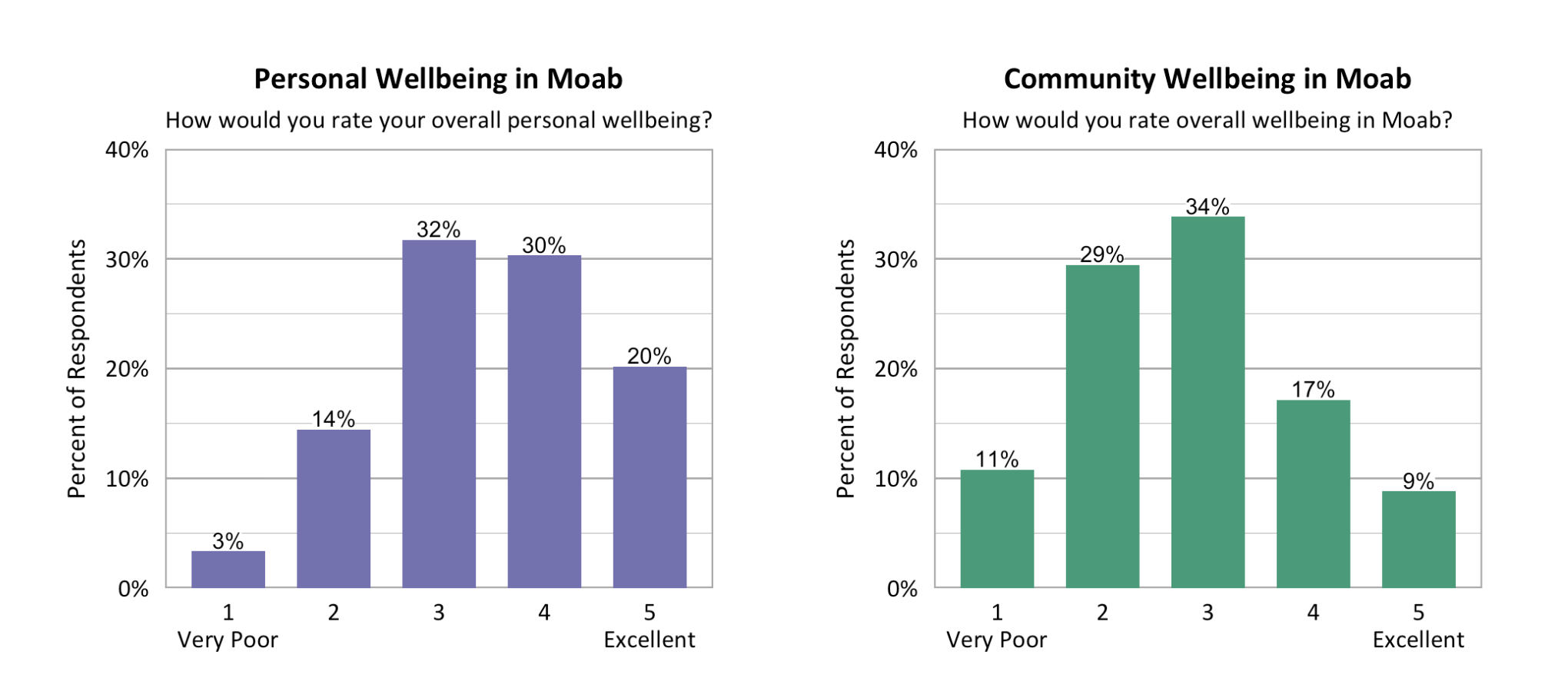Some information may be outdated.
Results front the annual Utah State University Wellbeing Survey Project don’t paint a new picture of Moab—rather, they echo what the Moab Tomorrow Together project, a future visioning project run by the city, found during its own community survey in May.
Respondents reported that population growth and the pace of economic development in Moab were too fast, and the top concerns for the future of Moab were affordable housing, water supply, access to public land, opportunities for youth, and access to quality food. The survey also found that overall personal wellbeing and community wellbeing in Moab declined from last year, and in addition, Moab reported the lowest wellbeing of the 33 total cities participating in the survey.
Moab has participated in the project since 2020. This year, the survey had 208 viable responses.
The average score for community wellbeing—which survey respondents were asked to rank on a scale of 1-5—was 2.84, the lowest of the 33 total cities participating in the project. The next lowest was East Carbon, with 2.98; then Price, with 3.15.
Only 9% of respondents ranked Moab’s community wellbeing as “excellent;” 11% ranked it as “very poor.” 74% of respondents said community wellbeing declined slightly or substantially within the past year.
The survey also found that respondents who were aged 60 and over, had a college degree, earned an income over $150,000, were a Latter-day Saint, and were a resident for five years or less, were more likely to rank the community wellbeing higher.
The average personal wellbeing, also ranked on a scale of 1-5, was 3.50, a significant decline from 3.82 in 2021 and 3.93 in 2020. This was also the lowest reported personal wellbeing score of the 33 total cities participating in the project: the next lowest was 3.73 in East Carbon. The highest was 4.27 in Draper.
51% of respondents said their personal wellbeing declined slightly or substantially within the past year.
But respondents also said what they loved most about Moab: the sense of community, surrounding nature and trails, and access to public lands. The top two highest-rated wellbeing domains for Moab respondents were connection with nature and physical health, followed by safety and security, mental health, and leisure time.
The Utah League of Cities and Towns, which works with USU on the Wellbeing Survey, classifies Moab as a rural hub/resort community: survey results show that Moabites feel fiercely at odds between these two things.
The community is plagued by worries about the future: mostly, worries about what rampant development could turn the city into. 65% of respondents said the current pace of economic development in Moab was “too fast.” Meanwhile, most of the other “rural hub/resort community” cities in the survey, such as East Carbon, Price, Delta, Blanding, Bluff, and Helper, reported that economic development in their towns was either “too slow” or “just right.”
Full results of the survey can be found at www.usu.edu/utah-wellbeing-project/.
Appreciate the coverage? Help keep local news alive.
Chip in to support the Moab Sun News.





